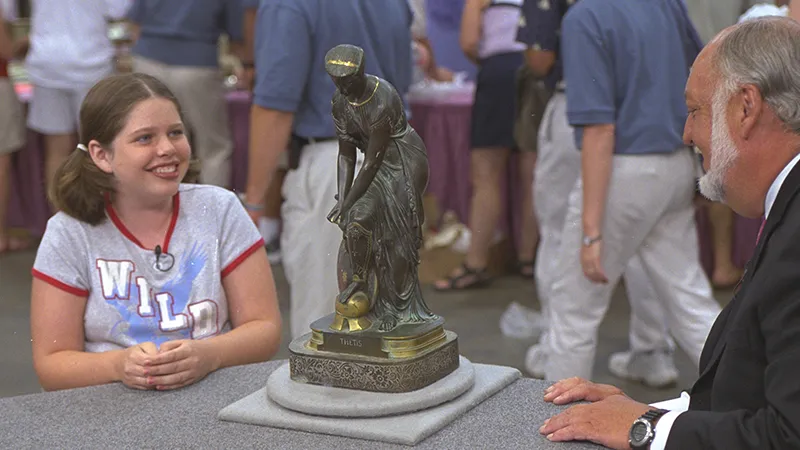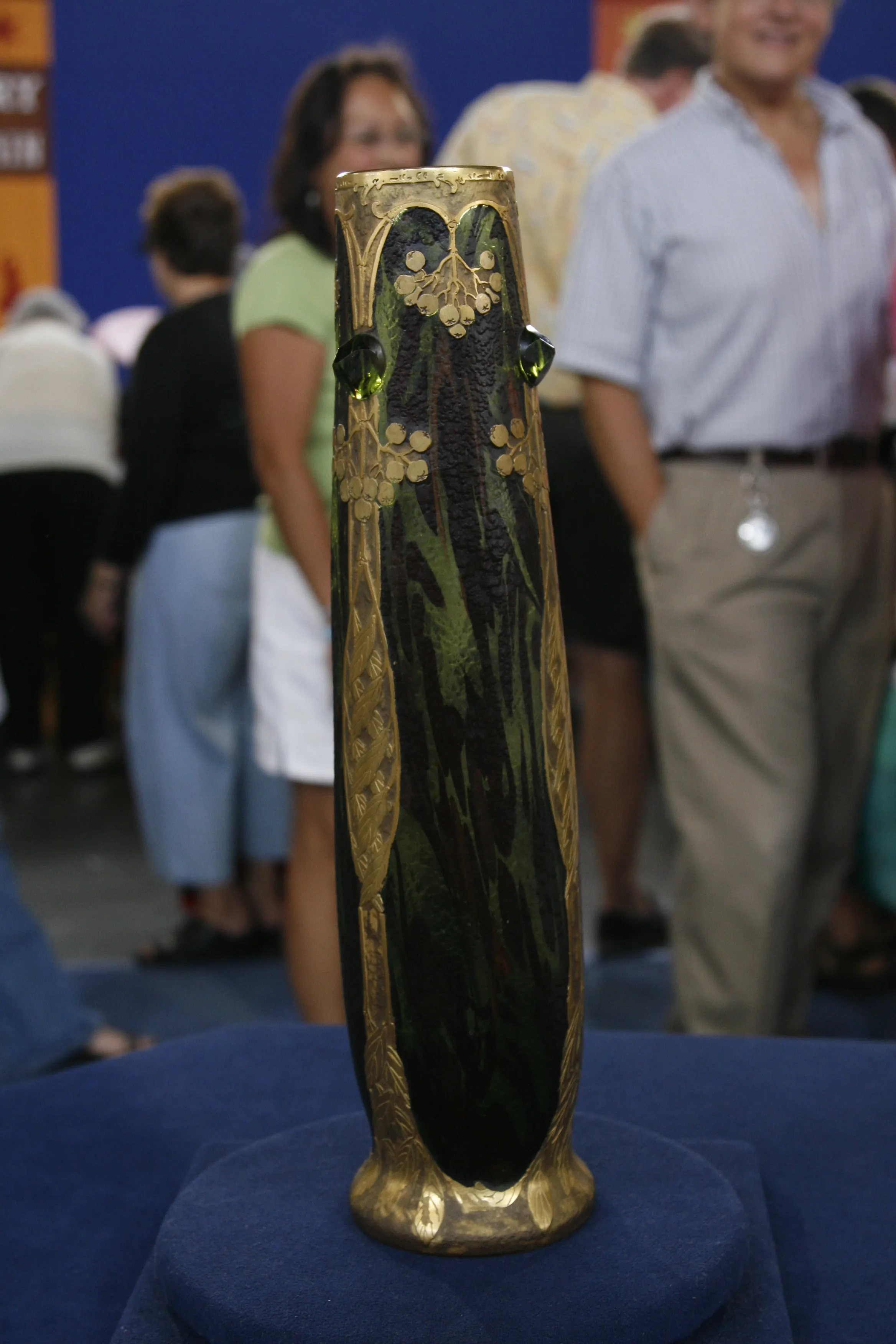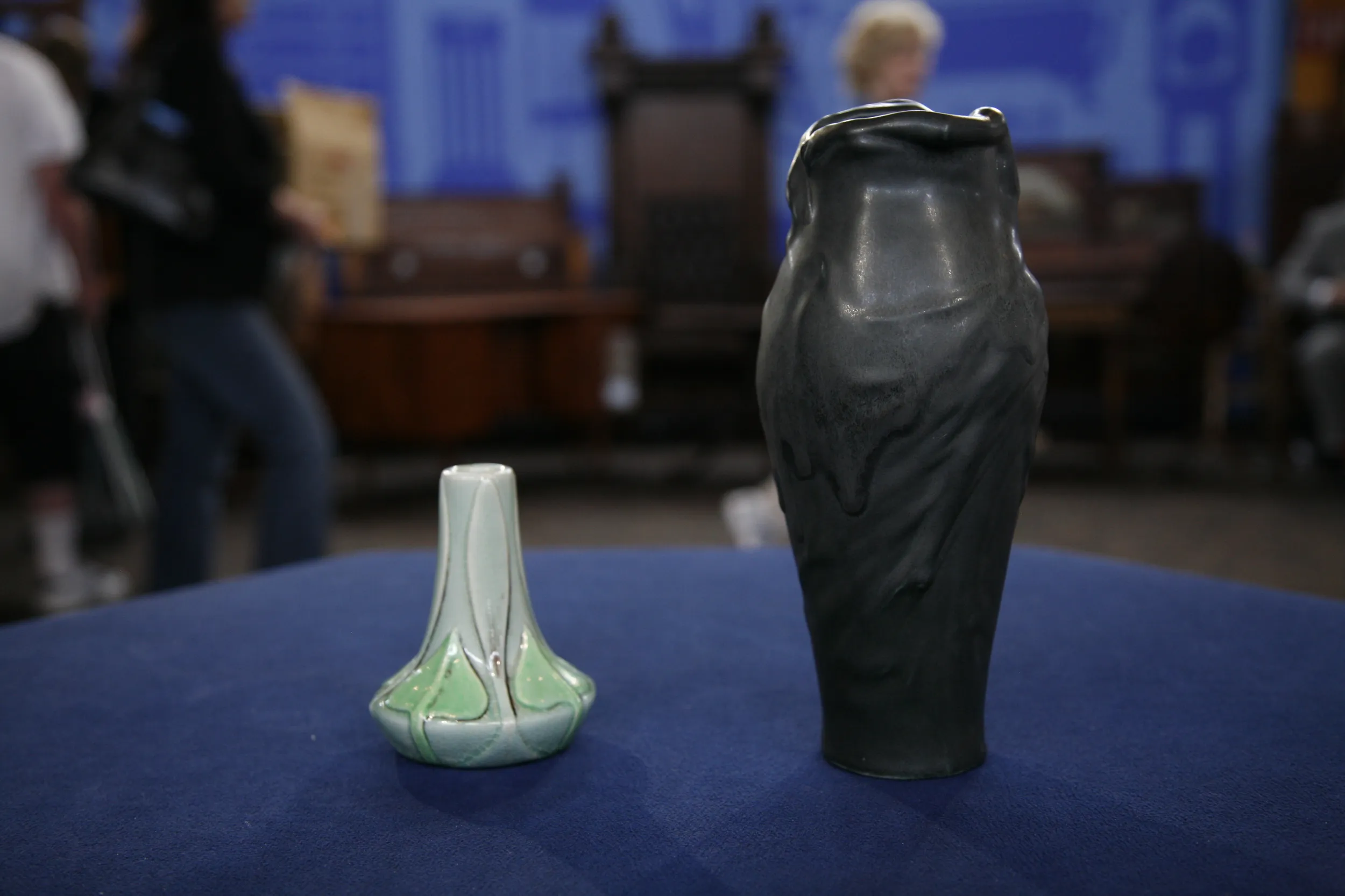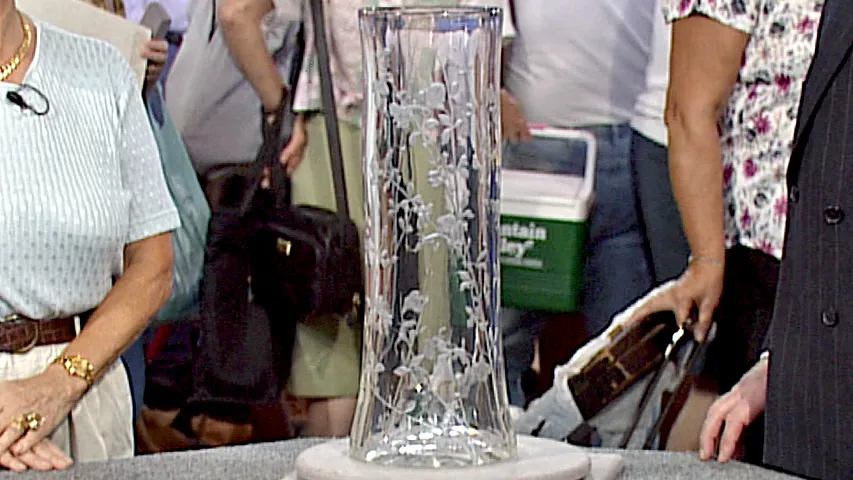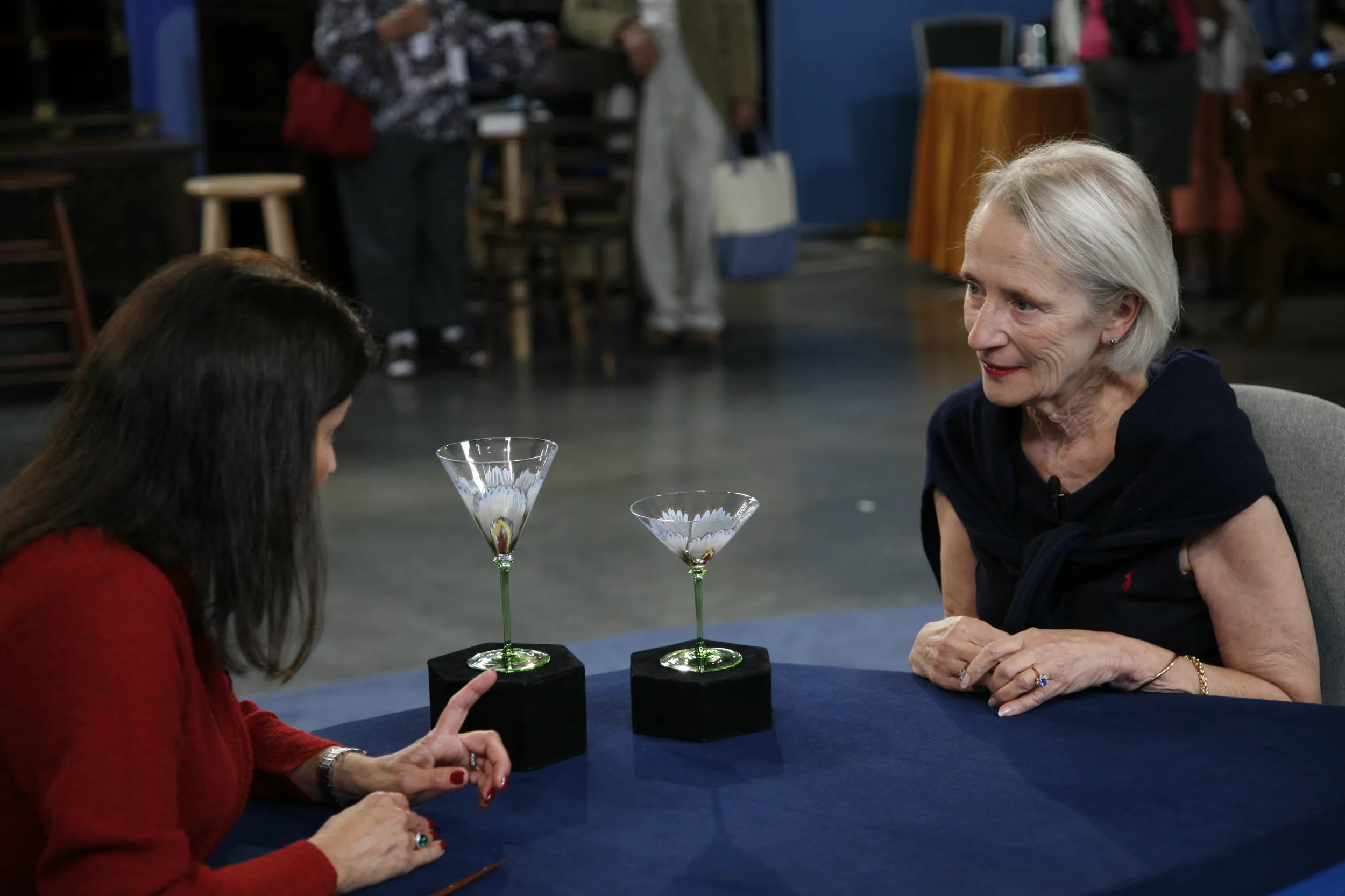GUEST: This is a piece that we've had on our bookshelf for about 30 years. And it came from my mother's side of the family. And that's about all that I know about it.
APPRAISER: All right, well, what you have is a "Boy on Trapeze" mechanical bank. Which was advertised as French's automatic toy bank. And the reason they called it a toy bank was because the action of the bank as you put a coin into the slot, the boy will revolve and deposit the coin and go around. As the coin became heavier, and it was heavier weight, it counter balanced so he spun around a couple times.
GUEST: Oh, okay.
APPRAISER: So the concept was that the boy got to see more action for his money.
GUEST: Okay.
APPRAISER: The actual patent model, which was made out of bronze, worked. The problem is that that one was calibrated so that would happen. When they made them in cast iron, they took away the finesse of the spinning. They still deposit coins, but they don't do as much action. The bank is cast with beautiful filigree and heads made out of cast iron. And this one is the best condition I've ever seen. Basically the bank was established by Barton Smith for production around 1891. It was produced for about eight to ten years. And as far as we know after that, they went out of business. So it was a limited production bank. It was very fragile. If the child dropped the bank, it would break those shafts. So consequently, there's not that many that exist today. Paint condition in mechanical banks is everything as far as value. The last "Boy on Trapeze" bank sold for $8,500.
GUEST: Oh, my God.
APPRAISER: The difference is that this is a lot better. This one on the open market today, fair market value would be $10,000 to $12,000.
GUEST: Really?
APPRAISER: Yeah.
